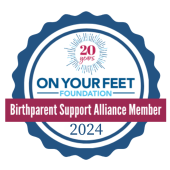
Facts on Adoption: Understanding the Process
1. Types of Adoption in the U.S.
2. Statistics on Foster Care and Waiting Children
3. Average Age of Adoption in Foster Care
4. Adoption Costs in the U.S.
5. Average Wait Times for Adoption
6. Openness in Adoptions
7. Legal Requirements for Prospective Parents
8. Importance of Post-Adoption Services
9. Length of Parental Leave for Adoptive Parents
10. Interstate Adoption Regulations
11. Home Study Requirements
12. Racial and Cultural Considerations
13. The Role of Birth Parents in Adoption Plans
14. Changing Trends in Adoption Preferences
Adoption trends in the U.S. have shifted in recent years. Additionally, there’s a growing recognition of the importance of post-adoption support, as more resources are made available to help families succeed. Staying informed on these trends can help prospective parents align their expectations and resources with current best practices in adoption.
With a clear understanding of these facts, prospective adoptive parents in the U.S. are better equipped to make informed decisions and provide a nurturing environment for their future child.
Get the Facts on Adoption Before You Begin
Understanding the essential facts on adoption is key to making informed decisions. From the initial steps of choosing the right agency to managing emotional adjustments, every detail contributes to a successful adoption experience. By preparing thoroughly and seeking support, families can create loving and nurturing environments for their children.
For those interested in adoption, we invite you to visit our website at Adoption Center for Family Building or contact us to learn more about the process and support available.





